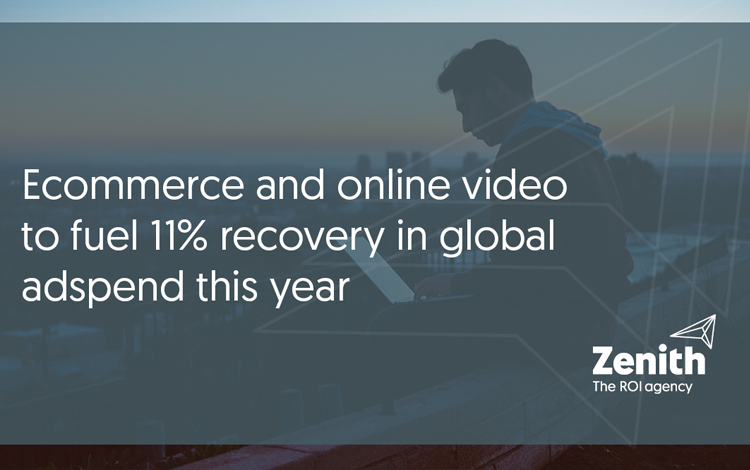MERCADEO Versión en español
E-commerce and online video boost recovery of global ad by 11 percent this year
Claudia Smolansky| 6 de agosto de 2021

Ecommerce Zenith
Worldwide advertising investment grew 11.2 percent in 2021, thanks to the exceptional demand for e-commerce ads based on performance and for online video advertising, according to Zenith. Ad spend will add up to some $669 billion this year, $40 billion more than the pre-pandemic investment of 2019. The growth of ad spend is expected to remain firm in the medium term, with worldwide growth forecast at 6.9 percent in 2022 and 5.6 percent in 2023.The coronavirus pandemic has accelerated structural changes in the economy and in e-commerce sales, all of which has led more consumers than ever to do their shopping online. Brands have reacted by associating with retailers and creating new direct-to-consumer operations, as well as by using advertising based on performance – mainly on social networks and paid search – to set consumers on this path to purchasing.Zenith predicts that ads on social networks will grow by 25 percent this year to reach some $137 billion, for the first time more than paid search, which in turn will increase some 19 percent to reach around $135 billion. Much of this is new money for the advertising market comes from small businesses that have had to make a quick adaptation to e-commerce in order to survive the pandemic quarantines. Budgets that brands would previously have assigned to retailers to make sure of obtaining shelf space are now invested in display and search ads on retailers’ websites.Nor is the switch to e-commerce ever likely to go away. Zenith foresees that it will continue to increase advertising revenues, sparking a 13 percent growth in social media and a 12 percent growth in search during 2022. Audiences will continue migrating to online, while the use of online videos is growing fast, even when the audience index on traditional television continues to shrink, following an exceptional growth that began with the quarantines of 2020.Advertisers value online video as a means of extending their reach, even as television loses its grip, though it remains an efficient form of brand communication in its own right. The demand is there, though the popularity of video on demand, financed with subscriptions, has helped limit the offer of high quality online video available to advertisers. Zenith predicts that advertising using online video will be the digital channel with the greatest growth in 2021, growing by around 26 percent to some $63 billion.“The panorama of online video continues to change, driven by the growth of streaming services and connected television,” according to Benoit Cacheux, global chief digital officer at Zenith. “Its continual evolution requires some radical rethinking about how to construct the best reach model onscreen. The incorporation of new data sources into TV planning also creates opportunities to synchronize even more the planning of TV and video. Social networks and online video have eclipsed the traditional static programming that is predicted to shrink some by 15 percent this year, whereas the online classifications have grown by just 4 percent. In general, Zenith foresees that digital advertising will grow by some 19 percent in 2021 while increasing its share of total advertising investment by some 58 percent, compared with 48 percent in 2019 and 54 percent in 2020. Meanwhile most other media are growing this year, since investment is recovering from the 16 percent crash in traditional media budgets during 2020. Cinema and outdoor advertising are the most affected by the tighter publicity budgets related to Covid-19, having been reduced by 72 percent and 28 percent respectively, and will enjoy a quicker recovery in 2021, with respective growth rates of 116 percent and 16 percent. It is foreseen that advertising on radio, which fell by 22 percent in 2020, will grow by 4 percent in 2021, while television, which dropped 8 percent in 2020, will grow by 1 percent in 2021. Print media will continue to decrease for the 14th consecutive year, with a drop of 8 percent in advertising investment in 2021. In 2023, ad spend in all these media will remain below the 2019 levels, though movie and outdoor advertising will recover almost all the ground it has lost.



















